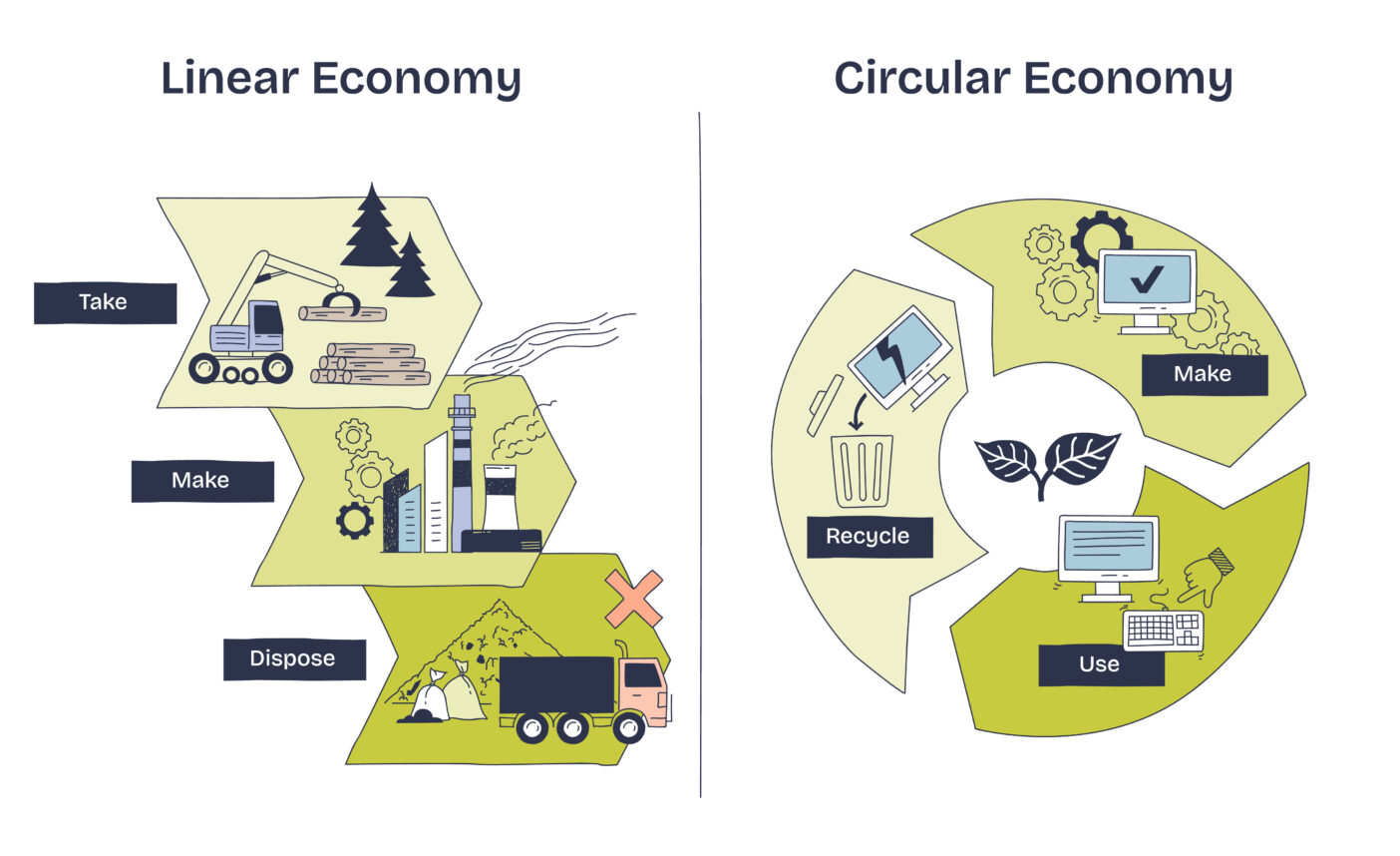Circular economy in cosmetics: a model for the future

In the past, our economic system was mostly based on the linear ‘cradle-to-grave’ model. Products are manufactured, used and then disposed of. In most cases, the raw materials used are irretrievably lost. Recycling, if it happens at all, is limited. However, a growing number of companies are now relying on a completely different principle: the circular economy.
What does circular economy mean?
In the circular economy, materials and raw materials are not lost at the end of their life cycle, but circulate in continuous cycles. Inspired by natural processes in which there is no waste, the ‘cradle to cradle’ concept was developed. It describes the idea of a waste-free, eco-effective economy in which all materials can be recycled or returned to biological systems.
What makes ‘cradle to cradle’ special is that it distinguishes between two cycles.
The biological cycle includes consumer goods that can be returned to nature after use, for example through composting.
The technical cycle concerns consumer goods whose materials can be reused after use without any loss of quality.
In both cases, circular economy means that there is no longer any ‘waste’ – it becomes food for new products.
Advantages of the ‘cradle to cradle’ concept for companies
The circular economy reduces companies’ dependence on raw material prices. Materials are preserved after use and can be used for new production cycles. This not only increases efficiency but also reduces costs in the long term.
At the same time, the ‘cradle to cradle’ concept offers companies the opportunity to rethink their business models. Products can not only be sold but also offered as services: after use, they are taken back, sorted and recycled.
Circular economy and cosmetics
The circular economy is also becoming increasingly important in the cosmetics industry. Numerous developments show how sustainability and resource conservation can be successfully combined with effective care products. Here are a few examples:
– Refill systems: Shampoos, shower gels and creams in refillable packaging are a direct example of the circular economy. Customers purchase a high-quality dispenser once and refill it with refill bags.
– Biodegradable ingredients: Many formulations today rely on surfactants, waxes or oils that can be returned to the biological cycle. They break down completely in the environment without leaving any residues.
– Recycling of packaging: Airless dispensers, jars and bottles are made from monomaterials. These can be easily recycled after use and reused in the technical cycle.
– Upcycled raw materials: One trend in the circular economy is the use of residual materials. For example, grape seeds from wine production can be processed into valuable grape seed oil, which is used in skin creams. Coffee grounds are now also used in exfoliants and masks.
– Compostable masks and pads: Textile products in cosmetics, such as non-woven masks, can be developed to be completely biodegradable.
These examples show that the circular economy in the cosmetics industry is not only theoretical but also practical, creating both ecological and economic benefits.
Challenges and opportunities
Of course, there are still hurdles to overcome. Some ingredients cannot be completely avoided because they are essential for certain functions. In the circular economy, however, it is crucial to keep these substances in closed systems so that they do not enter the environment.
Furthermore, the circular economy needs political support. Only if clear framework conditions are created – for example, through stricter packaging regulations or the promotion of sustainable innovations – can the principle become widely accepted.
Conclusion: Cradle to Cradle as a model for the future
The circular economy is much more than an ecological trend – it is a sustainable economic principle. It offers enormous opportunities, particularly in the cosmetics industry, ranging from innovative ingredients and sustainable packaging to new business models. More and more manufacturers are recognising that the circular economy not only protects the environment but also offers economic advantages.
Those who embrace the circular economy early on position themselves as pioneers, build trust with customers and help make the cosmetics industry more sustainable, resource-efficient and innovative.
At Cosmacon, we develop sustainable formulations that fit perfectly into a modern ‘cradle to cradle’ concept: from the selection of ecologically compatible raw materials to the development of innovative packaging solutions.
If you want to get started right away with sustainable, market-ready products, our partner, Tojo Cosmetics GmbH, already offers a wide range of private label products that can be quickly and easily integrated into your brand.
👉 Just ask us – together we can shape the future of cosmetics in the spirit of the circular economy.